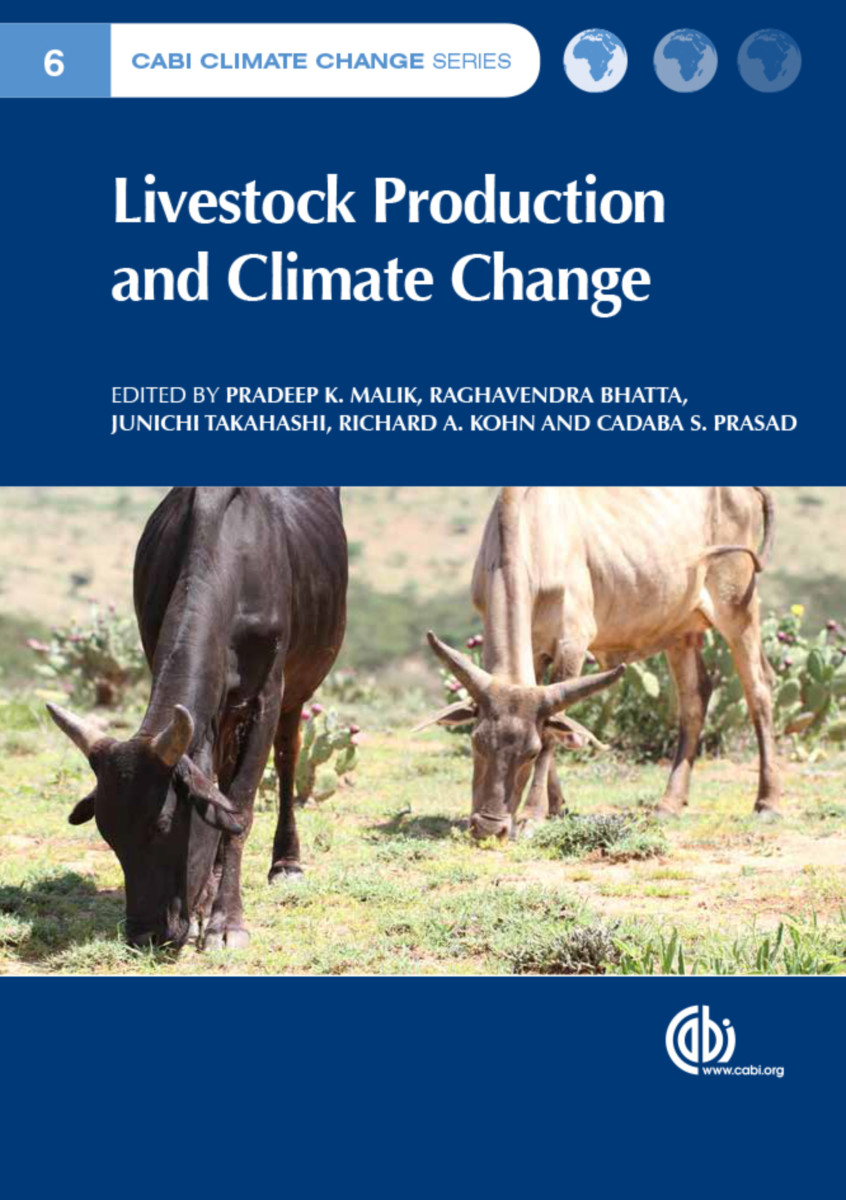- Publisher
CABI - Published
19th May 2015 - ISBN 9781780644325
- Language English
- Pages 400 pp.
- Size 6.75" x 9.5"
In a changing climate, livestock production is expected to exhibit dual roles of mitigation and adaptation in order to meet the challenge of food security.
This book approaches the issues of livestock production and climate change through three sections: I. Livestock production, II. Climate change and, III. Enteric methane amelioration. Section I addresses issues of feed quality and availability, abiotic stress (heat and nutritional) and strategies for alleviation, livestock-generated nitrogen and phosphorus pollution, and approaches for harnessing the complex gut microbial diversity. Section II discusses the effects of climate change on livestock diversity, farm animal reproduction, impact of meat production on climate change, and emphasizing the role of indigenous livestock in climatic change to sustain production. Section III deals with the most recent approaches to amelioration of livestock methane such as breeding for low methane emissions, reductive acetogenesis, immunization/vaccine-based concepts and archaea phage therapy.
1) Overview
SECTION I Livestock production
2) Feed Resources vis-à-vis Livestock and Fish Productivity In Changing Climate
3) Strategies for Alleviating Abiotic Stress in Livestock
4) Nitrogen Emissions from Animal-Agricultural Systems and Strategies to Protect the Environment
5) Nutritional Strategies for Minimizing Phosphorus Pollution from the Livestock Industry
6) Metagenomic Approaches in Harnessing Gut Microbial Diversity
7) Proteomics in Studying the Molecular Mechanism of Fiber Degradation
SECTION II Climate change
8) Perspective on Livestock Generated GHG’s and Climate
9) Carbon Footprints for Food of Animal Origin
10) Carbon Sequestration and Animal-Agriculture: Relevance and Strategies to Cope with Climate Change
11) Climate Change: Impacts on Livestock Diversity in Tropical Countries
12) Climate Change: Effects on Animal Reproduction
13) Climate Change: Impact of Meat Production
14) Indigenous Livestock Resources in Changing Climate: Indian Perspective
SECTION III Enteric methane amelioration
15) Enteric Methane Emission: Status, Mitigation and Future Challenges- an Indian Perspective
16) Thermodynamic and Kinetic Control of Methane Emissions from Ruminants
17) Ionophores: a Tool for Improving Ruminant Production and Reducing Environmental Impact
18) Residual Feed Intake and Breeding Approaches for Enteric Methane Mitigation
19) Acetogenesis as an Alternative to Methanogenesis in the Rumen
20) Immunization and Tannins in Livestock Enteric Methane Amelioration
21) Phage Therapy in Livestock Methane Amelioration
22) Feed Based Approaches in Enteric Methane Amelioration
23) Methanotrophs in Enteric Methane Mitigation
24) Summary
Pradeep K. Malik
Pradeep K. Malik is at the National Institute of Animal Nutrition and Physiology, India.
Ragavendra Bhatta
Ragavendra Bhatta is with the National Institute of Animal Nutrition and Physiology, India.
Junichi Takahashi
Junichi Takahashi teaches at the Obihiro University of Agriculture and Veterinary Medicine, Japan.
Richard Kohn
Richard Kohn
Cadaba S. Prasad
Cadaba S. Prasad is at the National Institute of Animal Nutrition and Physiology, India.


